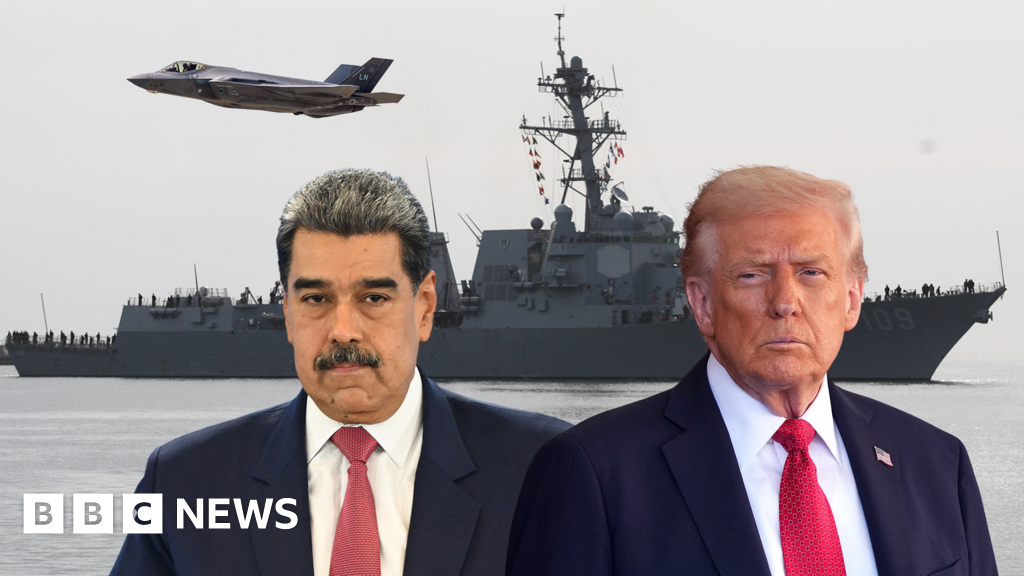
Drug crackdown or regime change
Ioan Wells,South America Correspondent And
Joshua Cheatham,Verify BBC

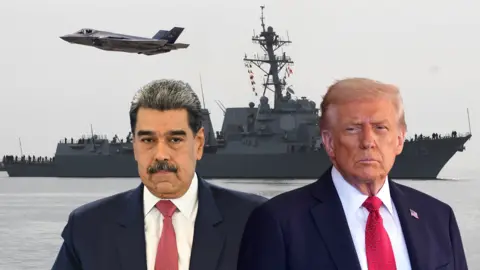 BBC
BBCFor two months, the US military has been deploying warships, fighter jets, bombers, marines, drones and spy planes in the Caribbean Sea. This is the largest deployment in decades.
Long-range bombers, B-52s, have conducted “bomber attack demonstrations” off the coast of Venezuela. Trump has authorized the deployment of the CIA to Venezuela, and the world’s largest aircraft carrier is being sent to the region.
The US says it has killed dozens of people in attacks on small Venezuelan vessels it accuses of carrying “narcotics” and “narco-terrorists”, without providing evidence or details about the people on board.
The strikes have been condemned in the region and experts have questioned their legality. They are being marketed by the US as a war against drug trafficking but all signs point to this being a campaign of intimidation that seeks to oust Venezuelan President Nicolas Maduro from power.
“It’s about regime change. They might not invade, hopefully it’s about signaling,” says Dr Christopher Sabatini, senior fellow for Latin America at the Chatham House think tank.
He argues that the military buildup is a show of force aimed at “striking fear” into the hearts of the Venezuelan military and Maduro’s inner circle so that they will turn against him.
BBC Verify is monitoring publicly available tracking information from US ships and planes in the region – including satellite images and images from social media – to try to build a picture of where Trump’s troops are.
The deployment is changing, so we are monitoring the region regularly for updates.
As of October 23, we identified 10 US military vessels in the region, including guided missile destroyers, amphibious assault ships and oil tankers for refueling ships at sea.

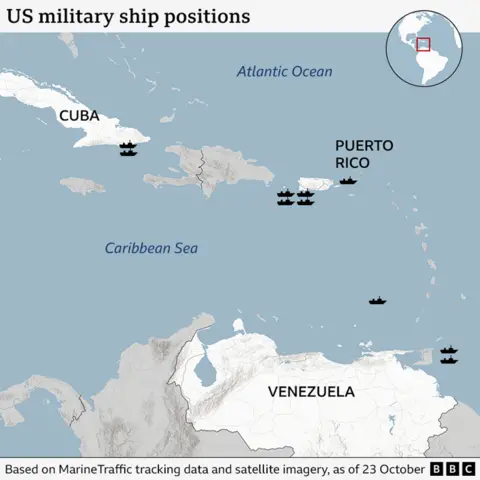
Board loyalty test under $50m prize
It’s no secret that the US administration, particularly Secretary of State Marco Rubio, wants to see Maduro ousted.
Earlier this year, he told Fox News that Maduro was a “terrible dictator” and, when asked if he was calling for Maduro to leave, said: “We’re going to work on that policy.”
But even for Maduro’s outspoken critics like Rubio, it’s hard to make a clear call for military-backed regime change — something that members of Venezuela’s opposition have called for.
Donald Trump campaigned against regime change in 2016, pledging to “stop the race to topple foreign regimes” and recently denouncing involvement in “perpetual wars”.
After the last election in 2024 was rejected internationally and by the Venezuelan opposition as free or fair, the US did not recognize Maduro as president of Venezuela. The US embassy in Caracas was closed in 2019 during Trump’s first term as president.

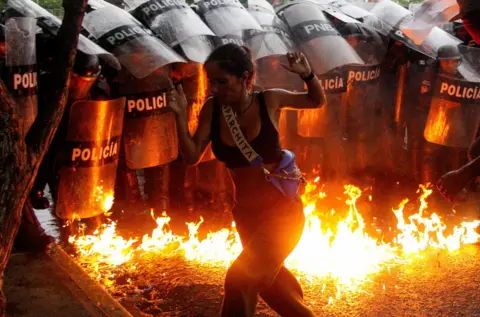 Reuters
ReutersThe US has increased its reward for information leading to Maduro’s arrest to $50 million, an incentive for his loyal, inner circle to turn him in. But no defects were found in it.
José Ignacio Hernández, a Venezuelan law professor and senior fellow at the CSIS national security think tank, says the $50m is “nothing” to Venezuela’s elite.
In an oil-rich state like Venezuela, there is a lot of money to be made through corruption. Former Treasury chief Alejandro Andrade paid $1 billion in bribes before pleading guilty.
Many analysts agree that Venezuela’s military will be key to any regime change, but to turn on Maduro and oust him, they will also need promises of immunity from prosecution.
Mr. Hernandez adds: “They will think, somehow, I am also involved in criminal activity.”
Michael Albertus, a political science professor at the University of Chicago who publishes extensively on Latin America, is not convinced that even a $500m donation will sway Maduro’s inner circle to him.
“Authoritarian leaders are always suspicious of their inner circle and hence they create mechanisms to monitor them and ensure loyalty,” he said.
Economic sanctions on Venezuela have exacerbated an already severe economic crisis, but have not succeeded in turning senior figures against their president.
Why it’s probably not just about drugs
Donald Trump has declared it a war on drug traffickers and said a ship the US struck on October 16 was “full of fentanyl.”
But fentanyl is primarily manufactured in Mexico — not South America — and comes into the U.S. over the southern border.
“It’s not about drugs,” says Dr. Sabatini. “But they’ve adopted the language of Venezuela’s opponents about how it’s not just a dictatorship — it’s a criminal regime.”
Since 2020, the US Department of Justice has accused President Maduro of leading a drug-trafficking and narco-terrorism organization, which he denies. Trump has said he authorized the CIA to conduct covert operations in Venezuela in part because of “drugs coming” from Venezuela.
Venezuela does not produce large quantities of cocaine – it is mainly Colombia, Peru and Bolivia. Some cocaine is smuggled through Venezuela, which its own government claims to be cracking down on.
A 2025 US Drug Enforcement Administration report stated that 84% of cocaine seized in the US came from Colombia and mentioned other countries, not Venezuela, in its cocaine section.
The first seven strikes were carried out in the Caribbean, which is not a major maritime route for drug trafficking compared to the Pacific Ocean, where subsequent strikes were carried out.
The US has not provided detailed evidence that Maduro leads a drug-trafficking organization. Maduro has repeatedly denied the allegations and for his part has accused the US of imperialism and worsening the country’s economic crisis through sanctions.
There are known cases of people close to him being accused.
In 2016, a New York federal court convicted his wife’s two nephews of conspiring to import cocaine into the United States. The lawsuit alleges that he planned to use some of the money for his wife’s political campaign. He was later released in a prisoner swap deal with the US.
Strengthening US sea and air power
The Pentagon has ordered the deployment of carrier strike groups to the region.
It includes the USS Gerald R. Ford, the world’s largest aircraft carrier.
As well as US ships we tracked around Puerto Rico – where there is a US military base – satellite imagery also showed two ships about 75 miles (123 km) east of Trinidad and Tobago.
One was the guided missile cruiser, USS Lake Erie.
The second MV appeared to be an Ocean Trader, according to Bradley Martin, a former US Navy captain who is now a senior policy researcher at the RAND Corp.
It is a converted cargo ship designed to support special forces missions mixed with commercial traffic. It can accommodate drones, helicopters and small boats.

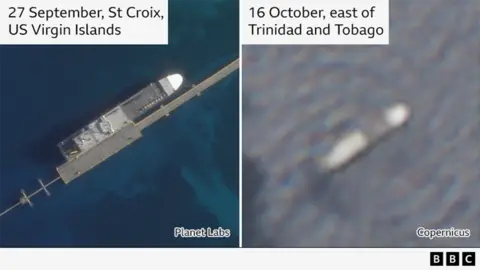
There are several types of missions they could potentially support, including reconnaissance in preparation for a strike. But Mr Martin stressed that his presence did not mean such activities were being carried out or planned.
Military analysts have pointed out that interdiction of drugs at sea does not require a force as large as the current US.
The US has also increased its air presence in the region – BBC Verify has identified several US military aircraft in Puerto Rico.
Stu Ray, a senior analyst at Mackenzie Intelligence Services, says satellite imagery taken on Oct. 17 shows F-35 fighter jets, possibly F-35Bs.

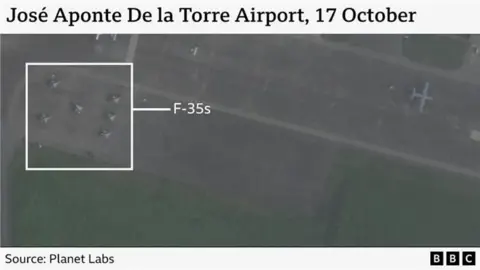
These are highly advanced stealth jets that are prized for their short take-off and vertical landing capabilities.
On social media, a private jet pilot shared a video of an MQ-9 Reaper drone filmed at Rafael Hernandez Airport in Puerto Rico.

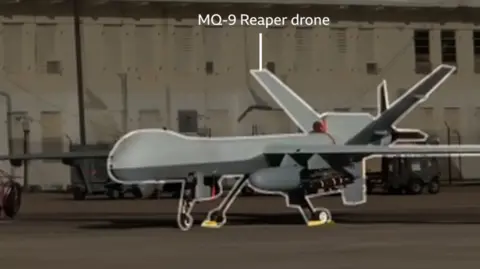 Thiago Santin
Thiago SantinThe US has used it for attacks and surveillance in Afghanistan, Syria, Libya and Mali.
In early October, BBC Verify tracked three B-52 bombers that flew across the Caribbean and near the coast of Venezuela.

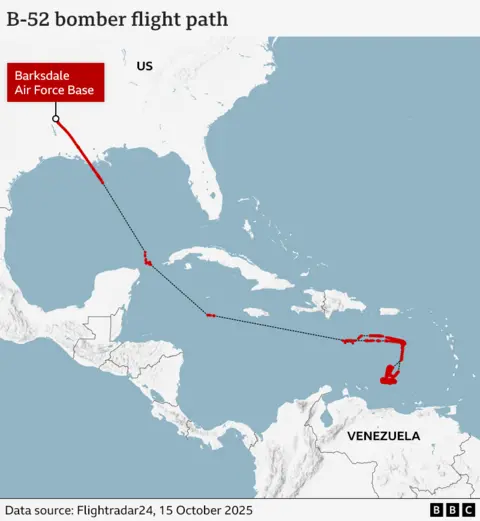
The US Air Force later confirmed that the planes had taken part in a “bomber strike demonstration”.
Flights of B1 bombers and P-8 Poseidon spy planes are also visible on the aircraft tracking platform.
Images on social media also showed military helicopters operating off the coast of Trinidad and Tobago.
Some of these Boeing MH-6M Little Birds – nicknamed “Killer Eggs” – are used by US Special Forces.

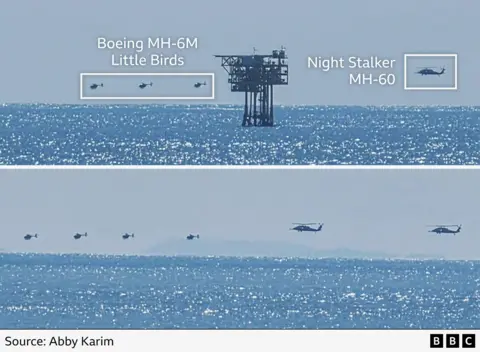
What the CIA Can Do in Venezuela
Asked if the CIA had been given the authority to take out Maduro, Donald Trump dodged the question and said it would be “ridiculous” to answer.
He said the U.S. is “now looking at the ground,” referring to possible military action on Venezuelan soil.
The CIA is viewed with suspicion by many in Latin America because of its covert interventions, regime-change efforts, and support of past right-wing military dictators, particularly in Chile and Brazil.
Ned Price, deputy US representative to the United Nations and formerly a senior CIA analyst and senior adviser to the State Department, said the CIA’s covert operation could take “many forms.”
“It could be information operations. It could be sabotage operations. It could be funding opposition parties. It could go as far as overthrowing the government. There are many options between low-end and high-end options.”
This may include agents used to target smuggling suspects in Venezuela. By the US’s own interpretation, this could include Maduro himself.
Dr. Sabatini says Venezuela is not a major production point for drugs, no cocaine or fentanyl labs to “take out,” but there are airstrips or ports that the U.S. could target.
“If he wanted to be aggressive, he could send a missile into an army barracks. There is good intelligence that some sections of the army are involved in cocaine smuggling.”
Or it could be a “smash and grab situation,” he notes, where they try to capture Maduro or some of his lieutenants and bring them to justice in the US.
The big question, he argues, is how long Trump is willing to keep so many US assets in the Caribbean.
If the main purpose of this military build-up is to intimidate Maduro, it is unclear whether it will be enough to induce defection.
Professor Albertus thinks it is difficult to know whether it is a real attempt to topple the Maduro regime through force.
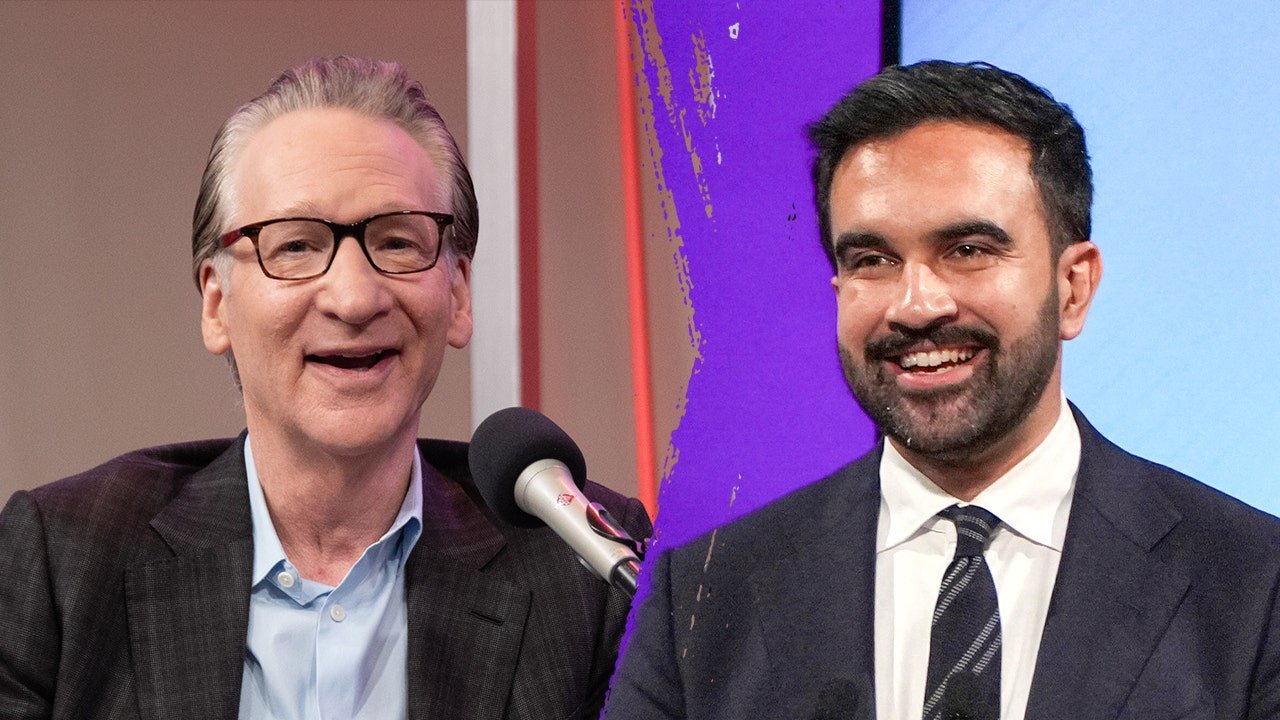
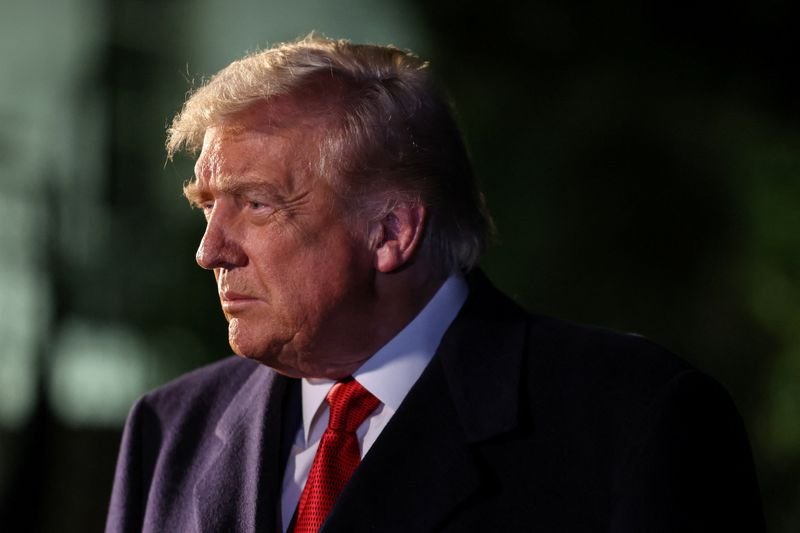
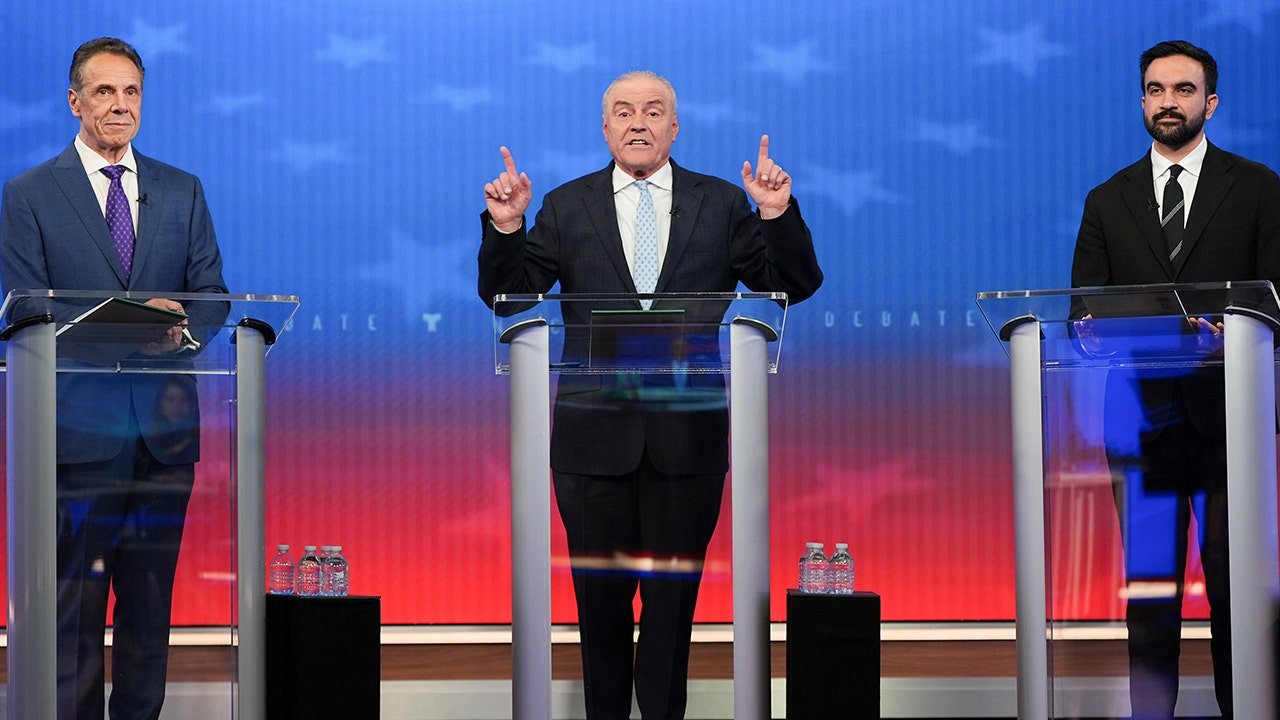
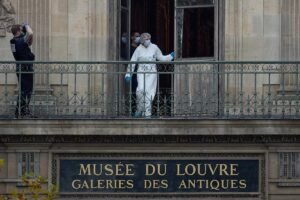





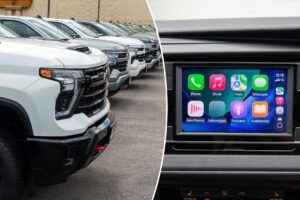


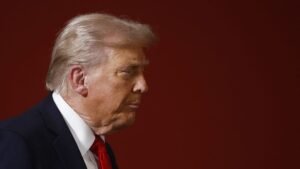
Post Comment